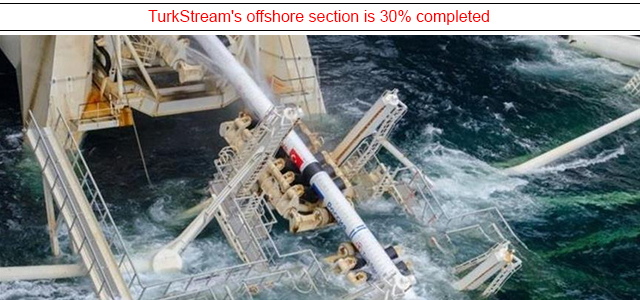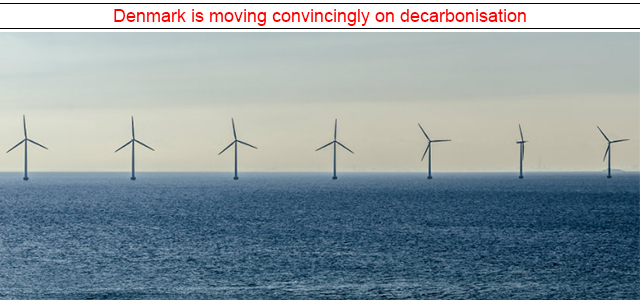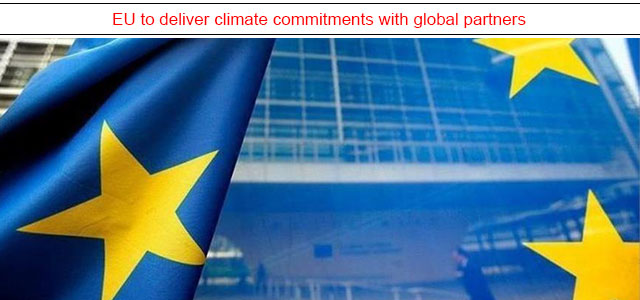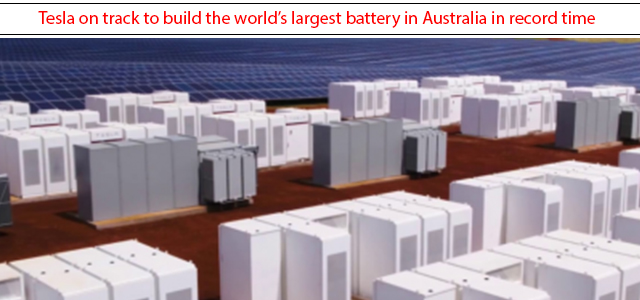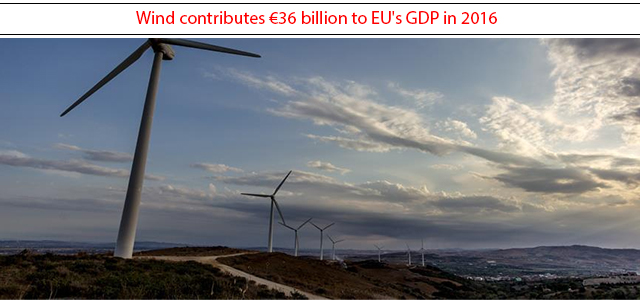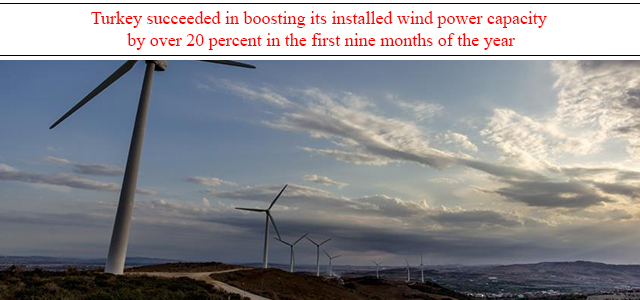
Turkey succeeded in boosting its installed wind power capacity by over 20 percent in the first nine months of the year, Turkey's Energy Market Regulatory Authority (EMRA) said Thursday.
Turkish wind power installed capacity increased by 20.2 percent to 6,278 megawatts in the January-September period of 2017, compared to the same period last year, official information gathered by Anadolu Agency (AA) reveals.
The country's wind power production increased by 15.7 percent to 13.2 million megawatt-hours in the first nine months compared to the same period last year.
Capacity saw 43-fold boost in almost ten years
Turkey increased its installed wind capacity from 2007 with 146.3 megawatts (MW) by over 4,191 percent, or a 43-fold boost, up to September 2017.
Since the end of 2007, Turkish installed wind power capacity saw a rapid increase through government subsidies and with the support of the regulatory body EMRA in streamlining the licensing process.
The Supporting Mechanism for Renewable Energy of Turkey, YEKDEM, offers feed-in tariffs to wind, solar, hydropower energy and biomass geothermal plants. The tariffs are currently available for renewable energy projects that will become operational at the latest by the year-end 2020.
Turkish Energy Minister Berat Albayrak announced last month that the YEKDEM scheme would expire at the end of 2020.
By the end of September 2017, Turkey enhanced its share of wind power capacity to 7.9 percent of total power generation capacity, compared to the end of September 2016.
The country plans to hold further auctions in the next few months to increase wind capacity through the Renewable Energy Resources Zone Areas (YEKA) project and by holding wind capacity tenders. Through these initiatives, Turkey could add a further 3,840 MW on top of the 6,278 MW already installed to cross a 10,000 MW threshold.
As an energy importing country, Turkey is heavily dependent on foreign energy resources including oil and natural gas, and energy costs are an important share of the country's current account deficit. Consequently, part of the country's target is to increase the share of domestic and renewable sources in its total electricity generation.
In 2016, Turkey produced 32 percent of its electricity from natural gas, coal accounted for 32 percent, 25 percent was produced from hydroelectricity and the remaining share was generated through wind, solar, geothermal, and biomass power plants.
Source: aa.com.tr
